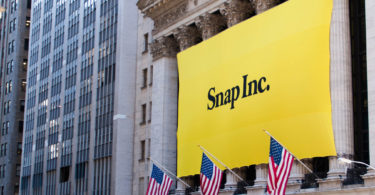For nearly a century, utilities have generated electricity from huge, centralized fossil fuel-fired power plants. This electricity is sent to users over large transmission grids.
This system works, but it has its limitations.
For instance, there’s often only one provider. If you want power, you’ll have to pay its going rate, whatever that may be.
And the power keeps getting more expensive. The cost of utility electricity has gone up 3% annually. It’s done so for the last 15 years.
Utility electricity is also unreliable. If the plant or the lines go down, that’s it – there’s no power.
Even as I write this, my own neighborhood is without electricity from the aftermath of Hurricane Isaias. I’m not expected to get power back for several days.
In 2019, there were 25,281 blackout events in California alone. That’s a 23% increase from 2018’s total.
Those outages are economy killers. The Department of Energy estimates they cost the U.S. economy $150 billion every year.
Utility power is also dirty. Every year, fossil fuel-generating plants spew out 1.9 billion tons of carbon dioxide.
Today, this utility grid model is going through some major changes. It’s happening here in the U.S. and around the world. And there are three economic trends driving this.
The Move to Renewables
The most important economic trend is decarbonization. Climate change means we must rapidly adopt renewable energy.
Renewable energy resources are clean, and their “fuels” are infinite. Even better, they’ve become the low-cost options in many places.
Next is decentralization. To slow down climate change, power grids have to integrate solar, wind and energy storage.
Many believe this integration negatively impacts today’s power grids. But in reality, the opposite is true.
Grids containing solar and wind farms (combined with energy storage) are more reliable.
Finally, there’s democratization. Residential and utility-scale solar, wind and energy storage are collectively known as distributed energy resources (DERs).
DERs help utilities reduce future fixed costs. How?
They supply power to the grid. Taken together, they lower the need for more capacity.
Instead of central power plants, grids continue to add hundreds to thousands of small DERs. This improves grid reliability and reduces costs.
Today, DERs like residential solar plus storage and utility-scale wind and solar are in turbogrowth mode. By 2028, global DER capacity could exceed 500 gigawatts.
From 2024 onward, DER deployment will exceed that of centralized power plants. The democratization of the grid is well underway.
Investors, Take Note
That presents plenty of opportunities for investors. Especially in storage.
By 2035, annual deployment will reach 3,046 gigawatt-hours (GWh). That’s up from this year’s expected addition of 164 GWh.
In 15 years’ time, the energy storage market will be worth $546 billion in annual revenue.
The biggest driver will be electric vehicles. Not just cars, but also medium- and heavy-duty electric trucks.
Residential storage is going to grow rapidly. For the next three years, expect a compound annual growth rate of at least 76%. By 2035, stationary storage alone could reach $110 billion annually.
Venture capitalists (VCs) are pouring money into energy storage. In 2019, VCs closed 32 investment deals totaling $1.7 billion, a 103% increase from 2018’s total.
Energy storage is going to see explosive growth over the next decade at least. It’s my top area of focus in the renewables sector.
Related: “Tesla Killer” launches 90,900% market surge
I’m here 3,000 miles from home in Long Beach, California.
This industrial suburb looks nothing like Silicon Valley, but recently it’s become the epicenter of an explosive new technology.
One that’s taking the $2.5 trillion electric vehicle market by storm.
It charges in just minutes — not hours. It’s 100% emission-free, costs next to nothing, and involves no fossil fuels. The only thing it emits is pure, clean water.
This is why experts call this technology the “Tesla Killer.”
I came here to try it for myself and see if all these claims were true.
And incredibly enough, the “Tesla Killer” worked better than I imagined.

The car took moments to fill and drove like a dream along the California coast, lasting hundreds of miles.
I’m now certain that no Tesla could possibly compete with it.
That’s why Bloomberg projects it to “skyrocket 1,000 times over.” And best of all…
The tiny, little-known stock behind the “Tesla Killer” are trades for just a few bucks.
Don’t wait another moment.
Now you can lock in its shares at a few dollars, instead of $1500 like Tesla.







